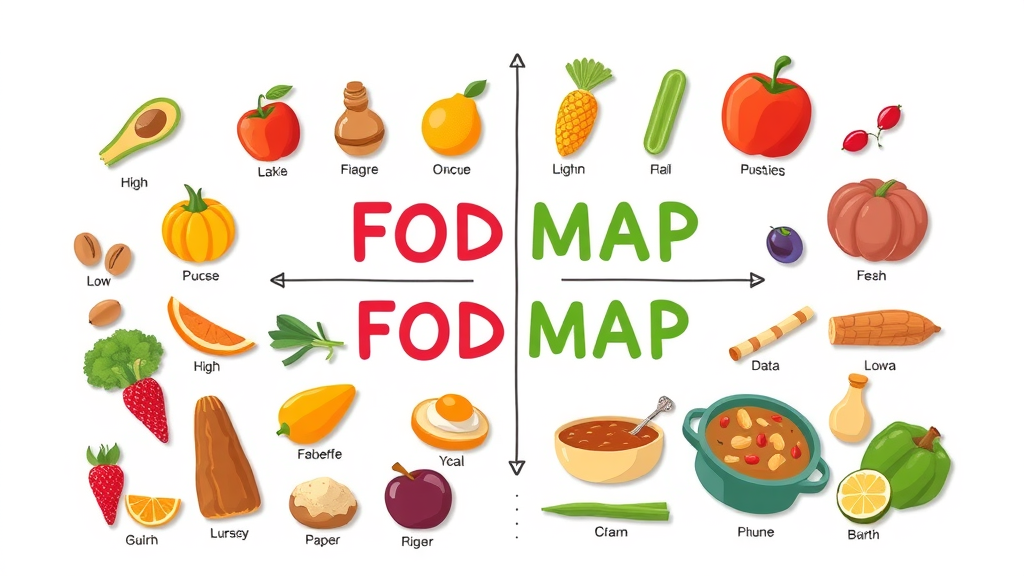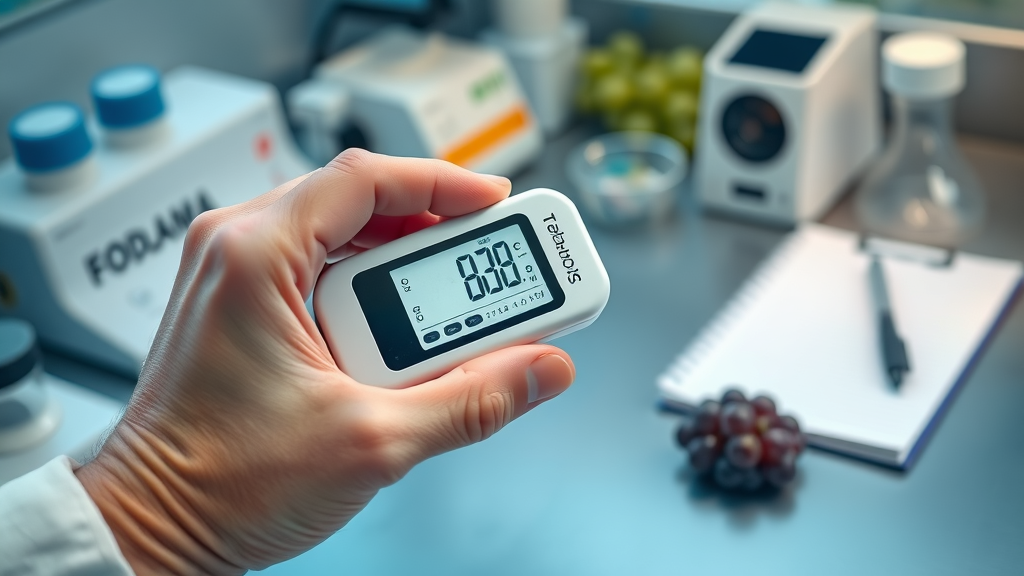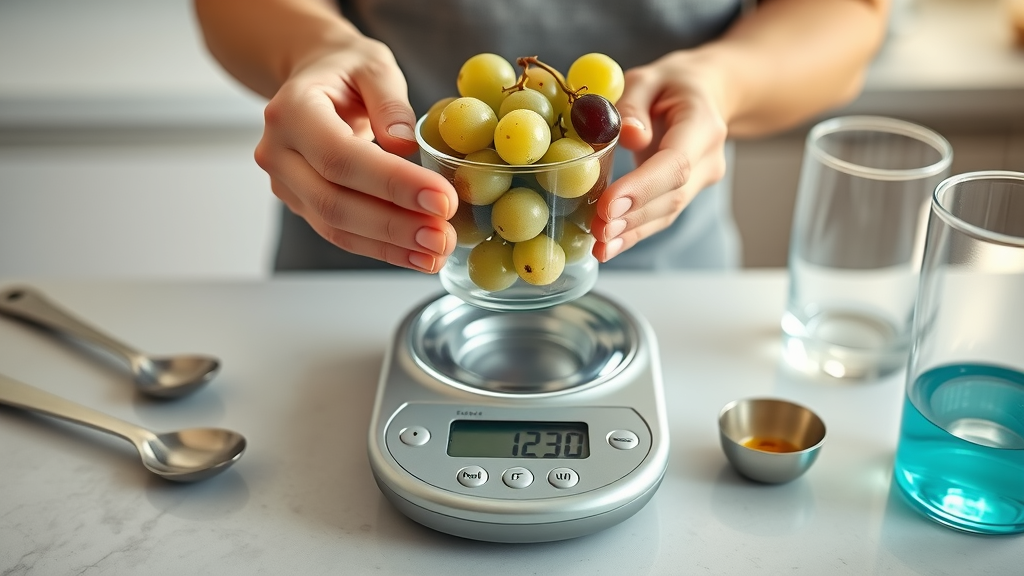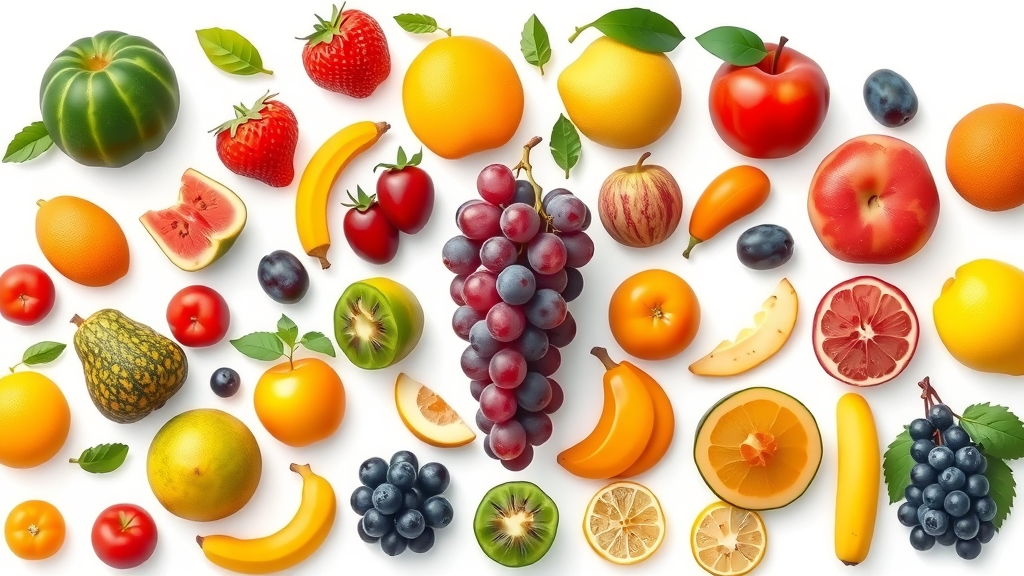Struggling with digestive discomfort can be isolating. Knowing whether grapes are low FODMAP foods can bring relief and freedom to enjoy fresh fruit without worry on a low FODMAP diet. Understanding this can transform your diet and improve your wellbeing—let’s explore what you need to know now about grapes and FODMAPs.

Understanding FODMAPs and Their Impact on Health
FODMAPs – short for fermentable oligosaccharides, disaccharides, monosaccharides, and polyols – are a group of carbohydrates found in many foods, including fruits, vegetables, and grains. For people with sensitive digestive systems or irritable bowel syndrome (IBS), consuming high FODMAP foods can trigger symptoms like bloating, gas, cramping, and discomfort. The FODMAP diet, developed and researched primarily by Monash University, provides a framework for identifying and limiting foods that are more likely to cause these issues, empowering sufferers with practical choices for their day-to-day meals.
Understanding which fruits are low FODMAP foods is essential for those wishing to enjoy a variety of fresh produce on a low FODMAP diet while managing IBS symptoms effectively. Grapes are frequently questioned due to their natural sweetness and sugar content, raising concerns about their potential to be high in FODMAPs. Knowing the science behind FODMAP content in popular snacks like grapes allows for greater dietary freedom and confidence, helping manage IBS symptoms more effectively.
What Are FODMAPs and Why the FODMAP Diet Matters
FODMAPs are a collection of naturally occurring carbohydrates that can be poorly absorbed in the small intestine of some individuals. When these poorly absorbed carbohydrates pass into the large intestine, they are fermented by gut bacteria, which produces gas and draws water into the colon—both of which may trigger symptoms of IBS.
The FODMAP diet aims to alleviate these symptoms by systematically identifying which FODMAP foods are problematic for each person. That’s why finding specific foods—like grapes—that are potentially low FODMAP is so important to people searching for reliable, comfortable nutrition on their gut health journey.
Staying informed about the content of foods and consulting with a registered dietitian or accredited practising dietitian can make starting or maintaining a low FODMAP diet more approachable. Many are relieved to learn that with the right information, they can still enjoy many favorite fruits in moderation.

The Role of Low FODMAP Foods in Managing IBS Symptoms
Choosing low FODMAP foods helps manage and reduce the risk of digestive discomfort in people with IBS. Scientific research demonstrates that following a low FODMAP diet can significantly decrease common IBS symptoms like bloating, abdominal pain, altered bowel habits, and excess gas. Fruits labeled as low FODMAP—when eaten in the right portions—are an essential component of this approach because they provide vitamins, fiber, and antioxidants without worsening gut issues.
It’s crucial to note that portion sizes play a significant role in whether a food is tolerated well or not. Eating even low FODMAP foods, including grapes, in large quantities could surpass what your digestive system can handle and bring back symptoms. Portion control and the right guidance are therefore foundational for a FODMAP friendly eating pattern.
If you’re interested in how other everyday foods might impact your digestive health, you may also want to explore whether popular snacks like digestive biscuits are truly a healthy choice for those with sensitive stomachs. For a closer look at the fiber content and potential digestive effects of these treats, check out this in-depth guide on digestive biscuits and gut health.
Are Grapes Low FODMAP? Science-Backed Answers
"Knowing what fruits are low FODMAP gives people living with IBS more confidence when choosing snacks." – Registered Dietitian
Analyzing the FODMAP Content of Grapes
So, are grapes low FODMAP? Scientific studies, including tests from Monash University—the global authority on FODMAP content—confirm that grapes are indeed low FODMAP foods when consumed within recommended serving sizes. Grapes contain primarily glucose and fructose, but the ratio present means that their natural sugar balance does not usually lead to excess fructose that could cause issues. This makes grapes an excellent snack for those on a low FODMAP diet, provided you don’t exceed the tested portion size.
Both green grapes and red grapes fall into the low FODMAP foods category when eaten at the recommended serving sizes. If you’re following guidance from a practising dietitian and using tools like the Monash FODMAP app, you’ll notice grapes are often listed among “green light” options, but with a reminder that too much may push the natural sugar content into the high FODMAP range.

Low FODMAP Diet Guidance: How Grapes Fit In
If you’re living with IBS and following a low FODMAP diet, including grapes as a low FODMAP food can be a positive step in managing your IBS symptoms. Grapes, as a low FODMAP food, offer a naturally sweet alternative to many snacks that can be problematic for people sensitive to FODMAPs. Enjoying grapes also gives variety to the list of fruits you can safely consume, contributing to a more satisfying and sustainable low FODMAP diet.
Modern technology, like the Monash FODMAP smartphone app, helps users quickly check the FODMAP content of foods, including grapes. It’s always best to confirm the latest guidance, as food testing constantly evolves. For those concerned about the content of food in their diet, grains and processed foods often pose more risk than fresh grapes, so opting for fruit in moderate amounts supports both gut health and overall nutrition.
Comparison of FODMAP Content in Common Fruits (100g servings)
Fruit |
FODMAP Category |
Safe Serving Size |
Notes |
|---|---|---|---|
Green Grapes |
Low FODMAP |
~150g (1 cup) |
Safe for most IBS sufferers |
Red Grapes |
Low FODMAP |
~150g (1 cup) |
Similar to green grapes |
Strawberries |
Low FODMAP |
~140g (10 medium) |
Very low FODMAP |
Apple |
High FODMAP |
~25g (⅛ apple) |
Excess fructose |
Banana (ripe) |
High FODMAP |
~35g (⅓ small) |
High in oligosaccharides when ripe |
Kiwi |
Low FODMAP |
~150g (2 medium) |
Easy to tolerate |
Official Guidance: Monash University’s Take on Grapes and Low FODMAP Diets

Monash University and Monash FODMAP Recommendations
As the preeminent authority on FODMAP foods, Monash University routinely tests and updates the FODMAP content of popular fruits. Their published research and digital lists consistently identify both green and red grapes as low FODMAP options when enjoyed at a serving size of about one cup (150g). Monash Uni’s recommendations are recognized globally, making their app and publications a gold standard for those trying to follow a low FODMAP diet, and for practitioners including accredited practising dietitians.
The Monash FODMAP app is especially helpful for real-time food checks, and Monash's online resources regularly update the safe serving sizes to reflect new research. Relying on these sources gives IBS sufferers confidence in selecting grapes as a snack, provided they stick to the recommended portion size.
Testing Methods: How FODMAP Content Is Measured
To determine the FODMAP content of foods, Monash University and other research labs use advanced scientific techniques like high-performance liquid chromatography. This method allows precise measurement of the content in each food—ensuring recommendations are based on reliable data. The rationale behind continually retesting fruits like grapes is that agricultural changes, ripening, and even seasonal variations can affect sugar and FODMAP levels.
Understanding how FODMAP content is tested also helps consumers trust the advice they get from professionals—knowing it’s grounded in up-to-date science and tested servings, not guesswork. Laboratories publish these results so patients and dietitians can stay informed about changes in the FODMAP diet landscape.
Portion Size and Serving Size: Enjoying Grapes the Low FODMAP Way

Safe Serving Sizes for Grapes on a Low FODMAP Diet
When it comes to portion control, even low FODMAP foods like grapes can become problematic if eaten in excess. The safe serving size recommended by experts, including Monash University and the Monash FODMAP app, is one cup (about 150g) of whole fresh grapes at a time to maintain a low FODMAP diet. This size avoids crossing into the high FODMAP range and dramatically reduces the likelihood of IBS flare-ups.
With the right guidance from a registered dietitian or by referencing tools like the Monash FODMAP app, you can keep grapes in your diet as a safe and satisfying fruit choice. The nutrient profile of grapes—rich in antioxidants, vitamins C and K—means you don’t have to sacrifice nutrition for digestive comfort.
"Portion control is essential for maintaining a low FODMAP diet without sacrificing favorite foods." – Gastroenterologist
Portion Sizes: Green Grapes vs Red Grapes
One common misconception is that grape color affects the FODMAP content, but both green grapes and red grapes are low FODMAP foods at similar portion sizes. However, both green grapes and red grapes are rated as low FODMAP at the same portion size—about one cup or 150 grams per snack or meal. Monash University’s detailed laboratory tests confirm that neither type presents a significant FODMAP risk when eaten in moderation.
If you enjoy trying different grape varieties, remember that the variation in FODMAP levels is minimal compared to the impact of serving sizes. Stick to the recommended amount for both types to benefit from their health perks without digestive distress.
Watching Your Intake: Reducing Risk of High FODMAP Overload
Consuming too much of any low FODMAP food can add up, especially if combined with other sweet snacks or fruits high in excess fructose. It’s easy to overindulge on grapes because of their bite-sized appeal, so it helps to measure a cup before snacking and be mindful of how they fit into your daily diet.
Regularly reviewing the list of low FODMAP foods and tracking your servings prevents accidental FODMAP overload. Consulting with a practising dietitian can provide more personalized advice as you refine your FODMAP friendly eating plan.
Pre-portion grapes into small containers for snack-ready servings.
Combine grapes with other low FODMAP fruits like strawberries or kiwi for variety.
Use a digital kitchen scale to measure accurate servings.
Log your intake using a smartphone app to monitor FODMAP serving sizes.
Consult a registered dietitian if you experience unexpected symptoms.
Grapes and IBS: Are Grapes Good for IBS Sufferers?

Managing IBS Symptoms with Low FODMAP Foods Like Grapes
Many people with IBS find it challenging to enjoy fruit without worrying about discomfort. Grapes, as a reliably tested low FODMAP food, can be a welcome addition for those needing more fiber and antioxidants in their diet. When you limit grapes to recommended portion sizes, the risks of triggering symptoms are low, making them a top pick for regular snacking or as part of balanced meals.
Including a variety of low FODMAP fruits—like grapes—also supports dietary diversity, which can help keep your gut resilient and your meals satisfying. With a focus on moderation, grapes provide a safe, sweet, and nutrient-dense staple for anyone managing IBS symptoms.
Potential Triggers: When Grapes Could Cause Discomfort
For some highly sensitive individuals, even recommended serving sizes of grapes could potentially cause mild symptoms. This may be due to unique sensitivities or when grapes are combined with other high FODMAP snacks in a short time period. Remember, the cumulative content of foods matters—so pair grapes with other verified low FODMAP choices and avoid eating other fruit portions too soon before or after.
If you notice new or increased IBS symptoms after eating grapes, keep a food diary and speak with an accredited practising dietitian for personalized strategies.
Choosing the Right Grapes: FODMAP Differences by Color
Green Grapes, Red Grapes, and FODMAP Content

Both green and red grapes are nearly identical in their natural FODMAP content. This makes grape color a non-issue as long as you’re tracking your serving sizes. Whether you opt for tart green grapes or sweet red varieties, you’ll benefit from their polyphenol, vitamin, and antioxidant content along with their low FODMAP status—if you respect the smart portion recommendations.
No grape variety—including seedless versus seeded—has currently been proven to have a dramatically different effect on FODMAP levels. Always check the latest updates in food databases for ongoing research.
FODMAP Foods to Watch: Comparing Grapes to Other Fruit Choices

While grapes can be safely enjoyed, other fruits commonly thought of as healthy snacks—like apples, mangoes, or watermelon—have higher FODMAP levels even at small servings. Comparing these with grapes, it’s clear why grapes earn a spot in FODMAP friendly snack plans. Always check a trusted source, such as the Monash FODMAP app, to verify if your chosen fruit matches your tolerance and portion needs.
Maintaining variety in your low FODMAP food menu ensures you aren’t stuck eating the same fruit daily, which furthers gut and overall health. This also supports better satisfaction with your diet and reduces the temptation to deviate toward higher FODMAP items out of boredom.
Strawberries
Kiwi
Oranges
Papaya
Blueberries (in small portions)
Pineapple
People Also Ask: Are Grapes Low FODMAP?
How many grapes can you eat on low FODMAP?
Answer: The safe serving size for most people is about 1 cup (150g) of fresh grapes. Always monitor your individual tolerance.
Are grapes good for IBS sufferers?
Answer: Grapes are generally well-tolerated by most people with IBS when eaten within the recommended serving size.

What is the lowest FODMAP fruit?
Answer: Some of the lowest FODMAP fruits include strawberries, oranges, and kiwi. Grapes also qualify as low FODMAP when eaten in the right portions.
What color grapes are low in FODMAP?
Answer: Both green and red grapes are considered low FODMAP when consumed in appropriate serving sizes.
FAQs: Are Grapes Low FODMAP and More
Can you eat grape juice on a low FODMAP diet?

Grape juice is considered a high FODMAP food because of its concentrated fructose content, making fresh grapes a better low FODMAP diet choice. A typical serving of grape juice far exceeds the safe threshold for people with IBS. Opt for fresh whole grapes within the safe serving size, and choose water or low FODMAP juices as alternatives.
Are raisins low FODMAP?
Raisins, which are dried grapes, have concentrated sugars and are classified as high FODMAP foods, unlike fresh grapes that fit within a low FODMAP diet. Even a small serving of raisins (13g, roughly one tablespoon) can be a high FODMAP food for many people. If you’re sensitive to FODMAPs, limit or avoid raisins and stick to fresh grapes.
Do grapes have any high FODMAP varieties?
There are no widely available grape varieties tested and reported as high FODMAP by Monash University. Both green and red types are considered safe within portion guidelines. However, always recheck for newer cultivars or unusual varieties if they become widely available, as agricultural changes can subtly affect sugar content.
How do grapes compare to other low FODMAP food options?
Grapes rank among the lowest FODMAP fruits available, making them a preferred low FODMAP food choice compared to high FODMAP fruits like apples, pears, and mangoes. Only fruits like strawberries, oranges, and kiwi routinely test lower than grapes for FODMAPs—making grapes an accessible, sweet, and safe fruit choice when eaten in moderation.
Key Takeaways: Are Grapes Low FODMAP?
Green and red grapes are both low FODMAP when eaten at the tested safe serving size of about 1 cup (150g).
Grapes provide fiber, vitamins, and antioxidants without triggering IBS symptoms in most people when portion sizes are respected.
Always check the current Monash FODMAP database for updates and use a digital scale for accuracy.
Juices and dried grape products (raisins) are high FODMAP; stick with whole grapes.
Moderation and portion control prevent accidental high FODMAP intake, supporting your comfort and dietary freedom.
Conclusion: Enjoying Grapes Safely on a Low FODMAP Diet
With up-to-date science and proper serving sizes, grapes can be a delicious, low FODMAP addition to your IBS-friendly routine.
If you’re looking to further optimize your digestive wellness, consider how your overall diet can support not just your gut, but also other vital organs. For those interested in a holistic approach, exploring kidney-friendly vegetables can be a smart next step—these foods often overlap with low FODMAP choices and provide additional health benefits.
Discover a curated list of vegetables that promote kidney health and learn how to incorporate them into your daily meals by visiting this comprehensive guide to kidney-friendly vegetables. Expanding your knowledge of nutrient-dense, gentle foods can empower you to build a more resilient and balanced diet, supporting your wellbeing from the inside out.
Sources
IBS Diets – https://www.ibsdiets.org/fodmap-diet/fodmap-food-list/
Gastroenterological Society of Australia – https://www.gesa.org.au/resources/ibs
Recent research indicates that grapes can be included in a low FODMAP diet when consumed in small portions. Monash University, a leading authority on FODMAP research, has updated its guidelines, recommending a low FODMAP serving size of approximately six grapes (about 32 grams) for green seedless grapes and six grapes (about 28 grams) for red seedless grapes. (wardnutrition.health) Exceeding these amounts may lead to higher FODMAP intake due to excess fructose, potentially triggering symptoms in individuals with irritable bowel syndrome (IBS).
It’s important to note that different FODMAP testing organizations have reported varying safe serving sizes for grapes. For instance, the FODMAP Friendly app lists red seedless grapes as low FODMAP at a serving size of 150 grams (one cup), while Monash University recommends a much smaller portion. (seasonhealth.com) These discrepancies may arise from factors such as environmental conditions, grape varieties, and testing methodologies.
Given these variations, individuals following a low FODMAP diet should adhere to the most conservative guidelines and monitor their personal tolerance to grapes. Consulting with a registered dietitian can provide personalized advice tailored to individual needs.
For more detailed information on the FODMAP content of grapes and other foods, consider exploring the Monash University FODMAP Diet App, which offers up-to-date research and serving size recommendations. (alittlebityummy.com)
For "Understanding FODMAPs: Your Guide to Beating Bloating and IBS", CLICK HERE.
NCWellnessHub.com
 Add Row
Add Row  Add
Add 




Write A Comment